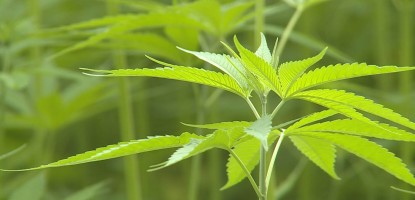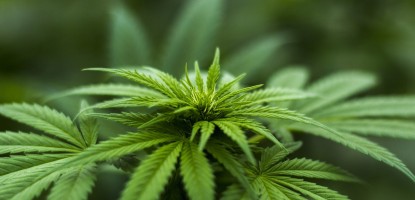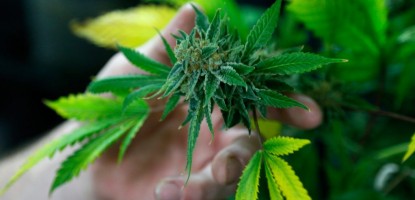For centuries, hemp seed and its byproducts have been used in various parts of rural India, but the plant remained unregulated by the government. However, in 2018, hemp cultivation was legalized by the Uttarakhand (India) government. Because of that, we saw a surge of farmers taking up Hemp agriculture. Despite promising high yields and a lucrative market, hemp farmers didn't make the much-anticipated profit.
Many farmers were desperate for additional income due to low commodity prices. Some farmers believed hemp was a guaranteed moneymaker, despite its labor-intensive nature and low return on investment. The under-regulation, doubts about its legality, and lack of awareness have hindered market growth and contributed to the low-profit turnout.
The low price of hemp crops and the lack of processors make it difficult for farmers to get in on the hemp bonanza. Those farmers who were able to "unload" their 2018 crop at deep discounts are still trying to find new ways to recoup losses.
You might not be aware of this, but Hemp is a highly versatile and renewable resource. Hemp can be used to create different products such as paper, plastics, clothing, food, and fuel. It also is one of the best-selling herbal supplements on the market. And yet farmers are still struggling to make a profit from it. Here are a few reasons:
There are numerous obstacles facing hemp farmers. The primary challenges revolve around the quality of the crop.
Although hemp can grow under various conditions, it requires diligent care to ensure a top product. It needs protection from harsh elements like excessive or not enough nutrients, heat, or cold to avoid stress-induced THC levels.
Moreover, The hemp plant can be contaminated by mold, mildew, and other things that lower the quality of the plant, meaning farmers have to be extra careful when growing hemp. They also need to have a way to test the quality of their crop. Otherwise, they risk selling low-quality hemp that won't be able to be used for anything.
The lack of proper farming practices contributes to the low production of hemp crops, rendering it less desirable in the marketplace.
The Price of Hemp
The price of hemp has declined for the past few years, and many farmers are struggling to sustain production costs.
Additionally, the market for hemp products is still relatively small, and there is a lot of competition from other farmers.
As a result, many hemp farmers are forced to sell their products at a discount, further cutting their profits. The demand for hemp isn't as high as it once was, and the price of hemp has dropped significantly. This means that farmers are selling their crops for a discounted price, which doesn't help them cover their costs or make a profit.
Distribution challenges have also contributed to the low turnover. Farmers who cannot find buyers for the hemp biomass on time end up sitting on the product for too long, rendering it less desirable.
Infrastructure Challenges
Hemp farmers are facing significant infrastructure challenges preventing them from generating profit. There are a few processing facilities spread across different states. Farmers must ship their hemp to these distant facilities, incurring high transportation costs.
Another challenge is the lack of storage facilities for hemp. Because hemp is a perishable crop, it must be stored properly to maintain its quality. However, few storage facilities are equipped to store hemp, so farmers often resort to makeshift solutions that can lead to crop loss.
Finally, there is the issue of financing. Because hemp farming is still relatively new, most banks and other financial institutions are reluctant to provide loans to farmers. The lack of access to loans makes it challenging for farmers to invest in the necessary equipment and infrastructure, further hindering their ability to generate profit.
The THC compliance
The difference between hemp and marijuana is the THC levels. If it is lower than 0.3 percent, it is hemp; anything higher becomes marijuana. Complying with the set cap of THC levels is challenging, especially for new farmers.
The THC levels are affected by environmental conditions. A stressful environment and lack of nutrients may increase the levels of THC. These levels are often tested during the flowering stage (three to five weeks after plantation). Plants with higher levels of THC are destroyed, which translates to losses.
Choosing high-quality seeds, providing favorable conditions, and self-monitor the plant can help maximize the cannabidiol harvest.
Lack of Education and Thinking Time
Many hemp farmers struggle to generate profit due to a lack of education and thinking time. They don't know how to grow and care for their plants properly, nor do they have the time to think about marketing and selling their products. As a result, they're not making much money off their crops.
An article published in the Journal of Agriculture, Food Systems, and Community Development states that farmers fail to generate profit because they lack the requisite knowledge on plant and soil agronomy. Agronomists can help these farmers solve their problems by using appropriate agricultural methods.
The lack of data on hemp growers and buyers has hindered the growth of hemp.
It is very difficult for processors to identify the source of hemp because of the lack of data on hemp growers. Unfortunately, the agronomic and economic research on hemp is in its infancy. The most recent data comes from non-peer-reviewed journals, which are widely read but difficult to differentiate between high-quality and applicability.
Lack of Interest in the Hemp Industry
Hemp farmers are struggling to generate profit due to a lack of interest in the hemp industry. Hemp can be used in various products, but the market for these products is still relatively small. Many farmers are reluctant to invest in hemp farming due to the risk and lack of demand for hemp products.
According to USA farmers, the framework outlined in the 2018 farm bill is rigid and unbearable. The overregulation is discouraging farmers from growing Hemp. Furthermore, various rules for planting and growing hemp are subjected to specific requirements in State and Federal law. Under federal law, industrial Hemp should not contain more than 0.3 percent THC, the compound that makes you 'high.'
The municipalities are responsible for testing the Hemp plant for THC before harvest. The crops that fall above the recommended limit are destroyed. In the past, Hemp was touted as a profitable alternative to corn and cotton, but skeptics are skeptical that the crop will ever get off the ground.
Hemp production in North America and Europe is regulated by governments and has been for years.
They are not taking advantage of byproducts
Hemp plants can be used for more than just the CBD oil extracted. The stalks can be used for fiber, while the seeds can be used for food or fuel. Farmers who process and sell these byproducts can increase their profits significantly. Hemp oil is sold under the Simple Soul brand and is on shelves throughout the state.
A market report from Brightfield Group estimates that the market for Hemp-derived CBD could reach $22 billion by 2022, up from $627 million last year. That is a big number for a small crop that is not yet gaining traction. Farming hemp for CBD offers a lucrative and sustainable option for farmers.
Recently, in what is seen as a landmark move, the Food Safety and Standards Authority of India decided to regulate hemp as a food source. According to The Gazette of India, hemp seed, hemp seed oil, and flour shall be sold as food or used as an ingredient. This move creates a market for farmers and leads to profits.
Growing hemp remains the most lucrative channel for farmers interested in cultivating the plant. There is not much infrastructure or financial support yet, but farmers expect the market to change as the industry matures and the supply chain emerges.







Leave a Comment